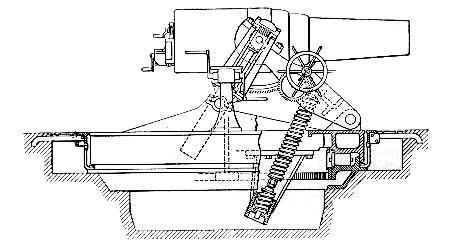Trail Shop: Battery Springer
Every trail crew has a trail shop that serves as a base of operations. Trail shops come in all manner of shapes and sizes, from simple storage units and shipping containers to sprawling complexes. Regardless of how humble a shop may be, each one has its own character and quirks that make it special.
Tucked away in a hillside cypress grove on the northwest corner of San Francisco, the trails shop at Golden Gate NPS is a pretty unique setup. It's located at Battery Livingston-Springer in Fort Miley, which consists of an old office as well as an underground mortar bunker first constructed in 1902.
Battery LaRhett Livingston under construction. Circa 1899. Presidio Army Museum Collection, Golden Gate National Recreation Area.
Battery Livingston is an Endicott Period (1890-1910) concrete mortar bunker that once held sixteen 12-inch coastal mortars divided into four mortar pits. Should a coastal assault or land invasion on the western shores of San Francisco have occurred, these mortars would have been utilized to lob explosive rounds onto the heads of the would-be invaders. During World War I, the mortars were removed from Battery Livingston to be deployed in Europe, but the war ended before they arrived and could be utilized. These mortars were obsolete by World War II so were never replaced.
Model 1890 Mortar on M1896 Carriage
In 1955, Battery Springer and the surrounding land was transferred to the Air Force, where it was renovated into a communications center. In the event of a missile strike or attack by the Soviets, this comms center could direct air traffic and dispatch planes from the security of the underground bunker. The bunker was stocked with multiple weeks’ worth of water, food, and fuel should the occupants need to shelter within the bunker during an extended attack or nuclear event.
At left, bunker during the Air Force period (1955-1968) and above, in 2022.
In 1968, the area was transferred to the National Park Service as part of the Golden Gate National Recreation Area. The space served various purposes and crews within the facilities division before becoming the dedicated trails shop in 2012.
Tools hang in the bunkers where munitions were once stored, and a hodgepodge of equipment sits parked on old tracks used to transport rounds within the bunker. The "data booths" where calculations were made for the mortars are now used to store our hazardous and flammable chemicals.
Fort Miley is, unsurprisingly, a bit dingy. There is lead paint peeling off the walls and probably hantavirus lurking in every corner. Constant fog and exposure to salty air means anything metal rusts at a speed damn near visible to the naked eye. Internet and electricity in the office are constantly failing.
But Fort Miley is both charming and badass. Mementos and knickknacks have accumulated over the years, the discoveries and contributions of current and former staff and interns. And it's immensely satisfying to slam home the steel blast doors in the bunkers at the end of the day.















Source: Chappell, Gordon and Justin Ruhge. “Fort Miley: Batteries LaRhett Livingston and Anton Springer.” Militarymuseum.org. National Park Service. https://www.militarymuseum.org/BtyLivingstonSpriner.html
All contemporary photographs by Joe Gibson.






